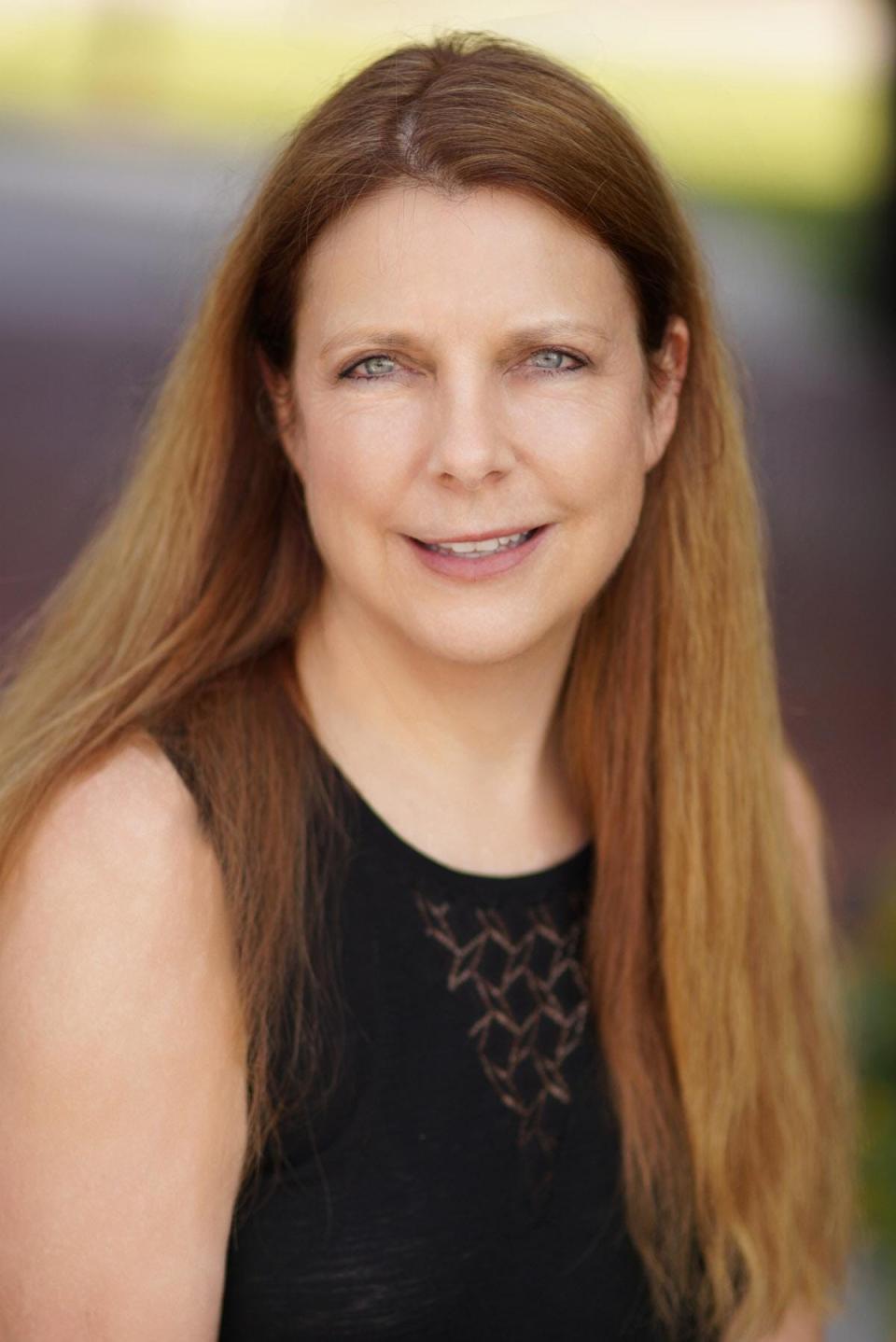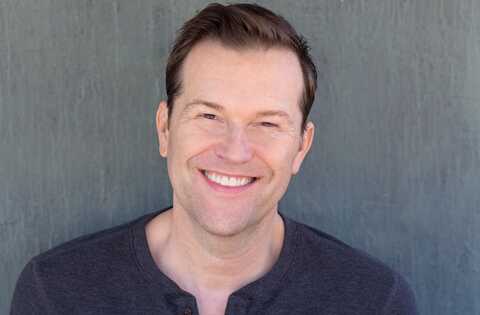And, Scene: WGA, SAG-AFTRA strikes impact Savannah's labor market, economy
- Oops!Something went wrong.Please try again later.
Those Clint Eastwood sightings around Savannah and Pooler evaporated last week, as production on “Juror No. 2” shut down when the actors' labor union, SAG-AFTRA, announced on July 13 that it would go on strike.
Members of the Writers Guild of America, who create scripts for for television shows, game shows, video games and films already were marching in picket lines, heading into day 70 of a work stoppage. Another Savannah-based production, “Clean Slate,” the Norman Lear-produced sitcom for streaming service Freevee wrapped, but finished the season with locked scripts.
More than 200 crew members, from set and lighting designers to costumers who call Savannah home found themselves unemployed and counting whether they had made enough money this year to qualify for their IATSE health benefits by working enough hours and earning enough in salary. The caterers, landlords, hotels, lumber companies and others that had budgeted with productions in mind are adjusting their third and fourth quarter budget projections.
Who are the players?
Not clear which union is which and who they represent? Here's the rundown:
Alliance of Motion Picture and Television Producer (AMPTP): The official collective bargaining representative for motion picture and television producers, established in 1982. Producers serve as decision-makers on sets, determining the scale and budget for films, securing funding sources from investors and studios, and negotiating distribution deals. They may be the originators of creative ideas and hire writers, or they may option scripts.
International Alliance of Theatrical Stage Employees, Motion Picture Technicians, Artists and Allied Crafts of the United States, its Territories and Canada (IATSE): Founded in 1893 to establish fair wages and working conditions for stagehands, this trade union now covers 168,000 individuals who comprise the crews that support all forms of live theater, motion picture and television production, trade shows and exhibitions, television broadcasting and concerts. IATSE is made up of 363 local, autonomous nonprofit unions, representing set designers, costumers, and other trades involved in productions. Savannah’s is Local 491.
Screen Actors Guild-American Federation of Television and Radio Artists (SAG-AFTRA): SAG, which was founded in 1933, and AFTRA, founded in 1937, combined forces in 2012 to represent 160,000 actors, announcers, broadcast journalists, dancers, deejays, news writers and editors, program hosts, stunt performers, recording and voiceover artists and other media professionals.
Writers Guild of American East and West (WGA-East and WGA-West): Established in 1954, the WGA represents more than 11,000 writers for television, radio and online media. Although the WGA is split geographically, the two unions combine to negotiate contracts and strike in solidarity.
Welcome Back: Historic Flannery O'Connor Childhood Home reopens with new director at the helm
Economic Outlook: Savannah's economic growth is slowing. Will strong labor market help us weather recession?
Why does the SAG-AFTRA strike matter to Savannah?
In some circles and across social media, the actors’ and writers’ strikes are being framed as a bunch of millionaires whining about making more millions. It is true that stars such as Tom Cruise, Dwayne Johnson and Julia Roberts will earn more on one film than 95% of anyone else on set will earn in a lifetime.
The reality, however, is that most people working in film, television and online media – from script doctors to commercial actors to the voices behind your favorite video game character – earn less than the minimum $26,470 SAG-AFTRA members must make to qualify for the union’s health insurance. Annually, less than 13% of all actors meet that threshold. That’s why lulls between gigs and productions are filled with service jobs in restaurants, driving cars for Uber and Lyft, or teaching for community nonprofits.

“It’s not just the high-level actors who are being affected by this. It’s all the way down to background actors. When you’re looking at writers, they’re not making millions of dollars. These are people writing the shows that we all love… and they don’t even have a living wage, they can’t support their families,” said Beth Nelson.
Nelson, who led the Savannah Regional Film Commission from 2016 until earlier this year, is now the Savannah field steward for IATSE Local 491. “With the film industry, in general, the crew members are mostly below-the-line trades people, craftsmen, electricians, painters, artists, casting directors. We’re probably going to see some loss of business for Savannah,” she said.
Instagram Story: Actor Luke Cook breaks down the reality of being a working actor

What's at stake for actors, writers and crew?
Chad Darnell, who has worked as an actor, writer, producer, director and casting director, splits his time between Savannah and Atlanta, where he grew up. A few weeks ago, he was driving Uber in Atlanta when an extras casting job opened up here.
He explained the issues that both the WGA and the SAG-AFTRA strikes are driven by advances in technology that have earned studios bigger bucks while diluting the earnings of writers, actors and crew members. Because of streaming services such as Netflix and Hulu, and artificial intelligence (AI), the Hollywood business model has changed.

“We are both [actors and writers] fighting for payments in the streaming world, meaning residuals,” explained Darnell.
Residuals are payments for other airings after initial release to those who worked on a project. The pay structure for residuals was originally negotiated in 1960 – the last time actors and writers went on strike at the same time – to compensate for when studio films showed on television and television shows were reruns. The landscape has changed drastically since, moving well beyond the movie rentals of the 1980s to the internet in the 1990s and streaming services today. Those payments get smaller over time and the number of times a show or movie is watched. One actor showed a screenshot of a residual payment for 13 cents, according to CBS News.
Streaming services have also cut down the number of episodes in a series, said Darnell. “So, normally a network television show, you have 24 to 25 episodes a season. So, you have a much larger time to prep in the writers’ room and a lot more writers… Now, we have these shows where there’s only 10 episodes, six or eight episodes.”
This structure also affects actors – though, not necessarily the stars. So, less time working, lower base pay, less ability to earn on the back end through residuals. There is money to be made through advertising and licenses, but it’s not being paid to writers and actors.
Another key sticking point for writers and actors is AI. “Writers don’t want their material, novels, screenplays being harvested into basically what I’m calling a ‘body farm.’ [AI] can pluck dialogue from here, ideas from there…,” said Darnell.
For actors, especially supporting and background actors who aren’t compensated the same way as the headliners, the issue is maintaining the rights to their likenesses in perpetuity. AI can scan background actors and use their likenesses in future films.
“[AMPTP] came out and were like, ‘No, we never said that. Of course, we would pay for usage’,” said Darnell. "BS, they’re not going to hunt down every extra and pay them.”
Said Nelson, “I’m surprised there haven’t been high-level groups working on this, comping up with some researched-based solutions. It’s a very complex topic, and I think we all need to have a better understanding of what it means. It’s nothing to be scared of, but you’ve got to understand it, so you can get ahead of it and regulate it.”
'Most of us are blue-collar workers'
Although IATSE members are not on strike, Nelson believes it is important for members to honor the strike.
Rosana Lucia, a costumer who lives in Savannah, agrees. She has worked on “Fear the Walking Dead,” “Manhunt” and “Panhandle,” among other productions. Lucia had just finished “Clean Slate” when the strikes occurred and now she's unemployed.
“Most of us are pretty much blue-collar workers, and this puts out not only the 160,000 members of SAG-AFTRA and 11,000 members of the WGA, but also, the hairstylist, the costumers, the payroll, accountants, production, craft services, catering, script, supervisors, sound production assistants, and so much more. So, that's about 2.5 million workers out of work right now,” said Lucia. “Right now, our health care, our pensions are at stake.”
But, she doesn’t see a quick end to the stalemate between the studios and the talent, relaying a Deadline report that quotes an unnamed studio executive saying, “The endgame is to allow things to drag on until union members start losing their apartments and losing their houses.”
A sliver of a silver lining
On Monday, SAG-AFTRA gave the greenlight through interim agreements for independent films that met a narrow set of criteria to proceed. Those films, according to Indiewire, could not be affiliated with any struck studio, have a distribution deal in the works, and must be independently produced and financed. Films also could not have a licensing deal with a studio or have sold foreign rights. Each interim agreement will be approved on a project-by-project basis.
That means smaller character-driven movies, low-budget horror films and experimental and arthouse-style cinema often passed over by major studios might have a chance to get made and seen.
The first film to receive an interim agreement by SAG-AFTRA is “Bride Hard,” a Rebel Wilson indie vehicle shooting here in Savannah. Darnell is back at work for the time being, casting about for principals and extras. Thirty-nine independent films have been provided interim agreements now.
The “golden age” of the Hollywood studio system fell apart in the 1960s because it had not adapted to the needs of its creative industry nor adapted to changing times and tastes. This collapse ushered in an era known as New American Cinema that ran from about 1965 to 1980, and bequeathed such classics as “The Graduate,” “Easy Rider,” “Bonnie and Clyde,” “American Graffiti,” “Jaws” and “Reds.”
With Georgia’s growing prominence in the production industry already cemented, Savannah might become what the Sundance Institute was to independent film in the 1990s – an incubator for the next golden age of film and television. In the meantime, there are a lot of creative people looking for work.
This article originally appeared on Savannah Morning News: WGA, SAG-AFTRA strikes impact Savannah's labor market, economy

